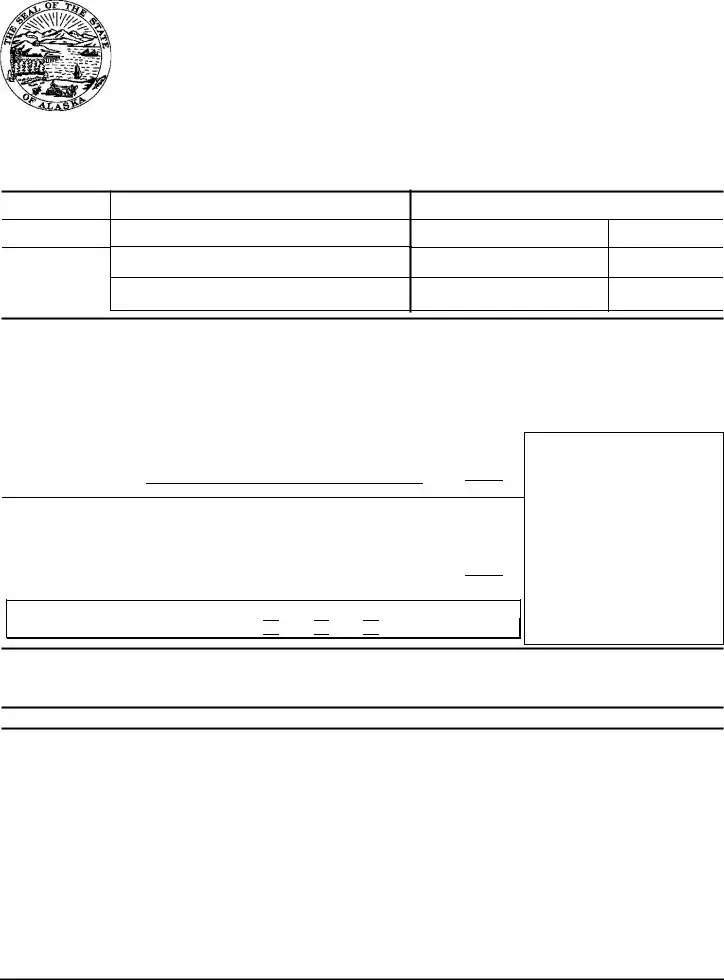The Alaska 25D 068 form is closely akin to a Construction Change Directive (CCD) used in many states across the U.S. Both documents serve as formal directives for changes in the work scope of a construction project. They detail alterations in project specifications, schedules, and the financial implications of these adjustments. Like the 25D 068, a CCD is a binding amendment to the original contract and requires the agreement of the contractor and the project owner, often also necessitating the acknowledgment of an overseeing authority, such as an architect or engineer.
Another similar document is the Architect’s Supplemental Instructions (ASI). While the Alaska 25D 068 form focuses more broadly on contractual changes, including cost and schedule adjustments, ASIs typically address minor changes in the work that do not involve adjustments to the contract sum or time. However, both documents are integral to documenting and formalizing changes during a construction project. They ensure that all parties are aware of and agree to modifications, although the ASI usually does not require formal acceptance by the contractor.
The Change Order Request (COR) is yet another document resembling the Alaska 25D 068. A COR is used to propose adjustments to the work, contract sum, or contract time before the change is officially approved and issued as a change order. Much like the 25D 068 form, which finalizes the change, the COR initiates the review process and discussions between the contractor, the project owner, and any other relevant stakeholders to agree upon the proposed adjustments.
A document somewhat related to the Alaska 25D 068 form is the Project Schedule Update. This document doesn’t directly modify the contract but communicates necessary adjustments to the project's timeline. While the 25D 068 form might detail the extension or reduction of the project's completion date due to change orders, a Project Schedule Update serves as an ongoing log of these adjustments for the purpose of tracking progress and managing delays or advancements in the completion date.
Similar in function to the 25D 068 form is the Contractor’s Claim for an Adjustment. This document is usually submitted by a contractor when unanticipated issues arise that require additional time or funds to resolve. Though it serves as a precursor to the formal change order process, it highlights disputes or requests for extra resources that might lead to a formal change, such as those detailed in the 25D 068 form when both parties reach an agreement.
The Notice to Proceed (NTP) document, while typically issued at the beginning of a project to signal the start of work, shares a procedural kinship with the Alaska 25D 068 form in terms of project management and contractual adherence. Both documents mark pivotal points where specific terms and conditions must be followed to maintain the contractual integrity of a project. However, the NTP is more about initiation, whereas the 25D 068 form deals with modifications to an ongoing contract.
Similarly, the Project Completion Certificate is related to the Alaska 25D 068 document in that it officially alters the project status - the former confirms the completion of all work in accordance with contract specifications, while the latter can adjust the timeline for reaching this completion. Both are critical for closing out contractual obligations, though they are used at different stages of the project lifecycle.
The Performance Bond is akin to the Alaska 25D 068 form in the sense that it provides a financial guarantee for the completion of the project as per the contract's terms, which may include amendments made via change orders. While the bond itself is an insurance policy for the project owner, the process of adjusting the project's scope, budget, or timeline through documents like the 25D 068 can directly impact the conditions of the bond.
The Request for Information (RFI) document, although primarily aimed at clarifying project details or specifications that may be ambiguous or undefined, can lead to the necessity of a change order similar to the Alaska 25D 068 form. RFIs can uncover discrepancies or additional needs that result in contractual changes, showing the interconnected nature of project management and documentation processes.


 Yes
Yes 
 No
No 
 N/A
N/A